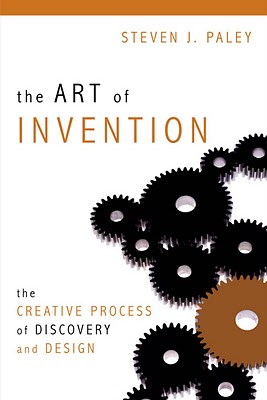
What people are saying about The Art of Invention
“Steven Paley gets it exactly right. Invention is both an art and a science and it starts with an appreciation for technology, a keen sense for business opportunities, and above all a deep understanding of human need. It also requires a childlike curiosity, a sense of wonder, and the optimism to believe that you can make a difference. Read this book and be inspired.”
—Bill Burnett, executive director of the Product Design Program and consulting assistant professor of mechanical engineering at Stanford University
“A must-have for any inventor. Easy to read and understand with simple, clear examples. The Art of Invention teaches creative thinking in a way that inspires us to invent. Through numerous practical examples and fascinating case studies, Steven Paley guides us on a journey through the world of creativity in engineering. This is the first book that I have ever seen that shows both the aspiring and experienced inventor a clear path to successfully fulfill their goals.”
—Ronald D. Fellman, Ph.D., former professor of electrical and computer engineering at the University of California at San Diego, a life-long inventor, founder of QVidium and Path1 Network Technologies.
“I don’t know if lightning can be bottled, but Mr. Paley has come closer than most in The Art of Invention in laying out in simple, compelling language the inventive process and act.”
—San Francisco Book Review
The Book
The lowly paperclip attracts little attention in our world of advanced gadgets and increasingly sophisticated technology. But to veteran inventor and design engineer Steven J. Paley, it is a prime example of the qualities that often characterize a great invention—simplicity, elegance, and robustness—and it provided a lasting solution to a common problem.
In this entertaining and insightful exploration of the process of invention, Paley shows why these same three qualities are essential not only to the success of simple devices, but equally to complex inventions from computer chips to nuclear power plants. Whether you’re an aspiring inventor or an experienced designer, Paley’s expertise, personal examples, and case studies offer detailed guidance on conceptualizing your ideas and turning them into reality.
Paley begins by exploring the essential aspects of creative thinking, from identifying a problem or need, which is often hidden in plain sight, to finding an inspired solution. He shows how ideas can come from a variety of sources such as the natural world, basic physical principles, life experience, or even chance observations. He examines how intuition and the harnessing of subconscious information are key ingredients for the inventive process.
Next, Paley focuses on the three fundamental themes of simplicity, elegance, and robustness. He vividly and persuasively illustrates through many examples how great inventions embody these crucial characteristics.
The author concludes with an in-depth look at the business of invention and the typical inventor’s toolkit. He addresses the real-world challenges of turning a good idea into a practical, marketable application, including patents, marketing, and entrepreneurship. He is candid about the realities of hard work and the need to learn from the inevitable mistakes along the way.
Full of insights and practical guidance from a successful inventor and entrepreneur, The Art of Invention will open new avenues of creativity for budding and accomplished inventors alike.
|